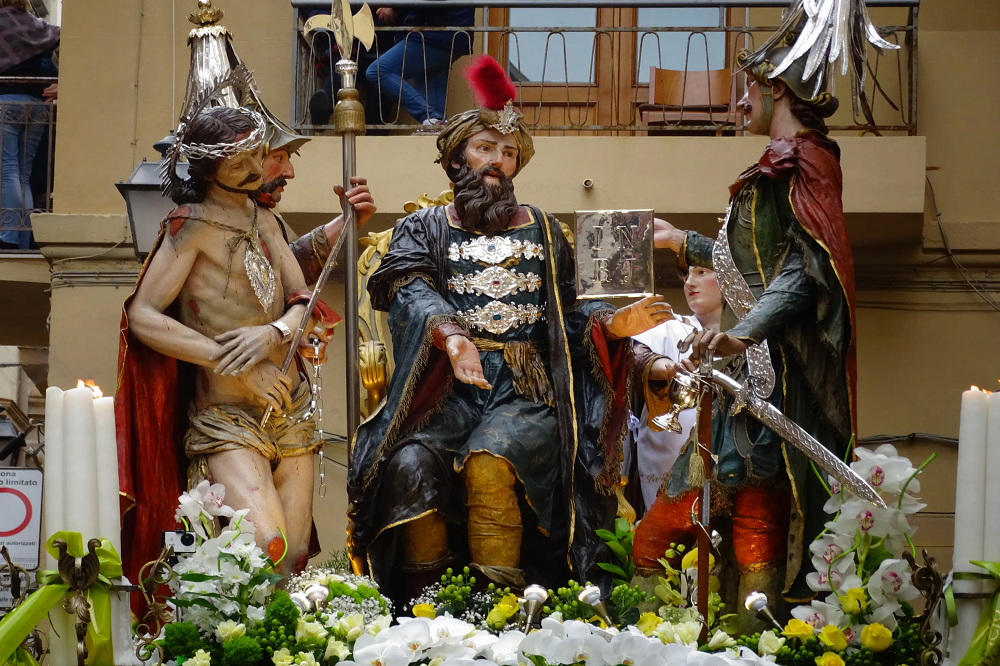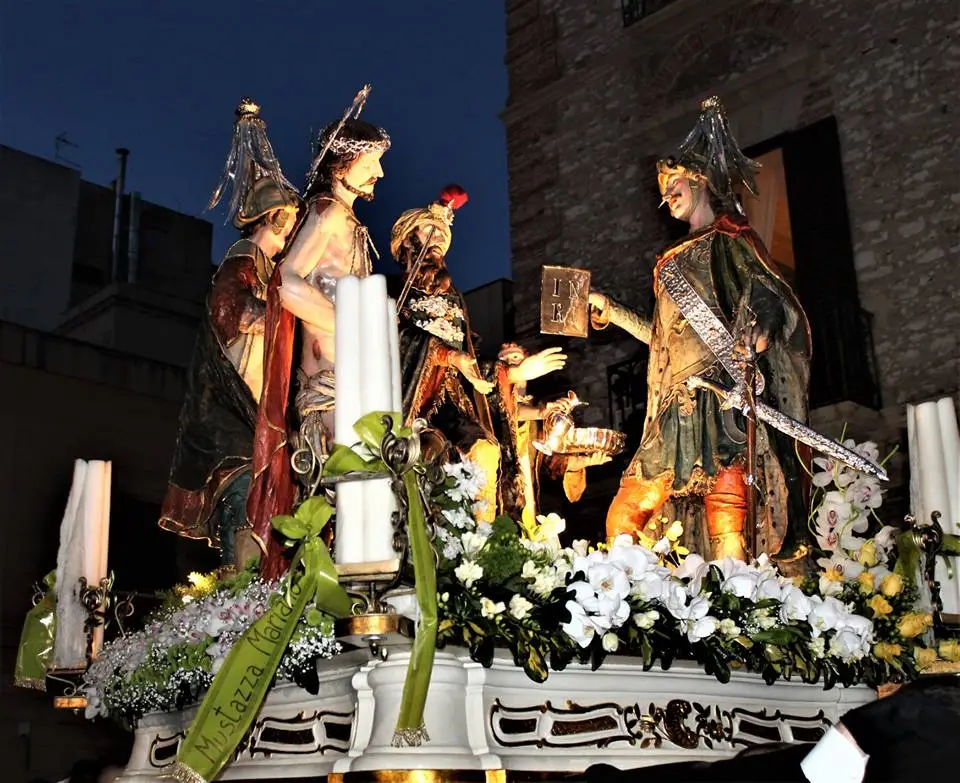The Procession of the Mysteries of Trapani
4 min · 5 Feb 2024

The Procession of the Mysteries of Trapani is an ancient Easter tradition and one of the most evocative religious processions in Sicily. Known even beyond regional borders, it has been held from Good Friday to Holy Saturday for over 400 years (with few interruptions throughout history). It represents the passion and death of Christ. The crowds that gather to witness the slow march often reach a kind of delirious fervour perhaps only comparable to that which accompanies the Semana Santa parades in Seville.
It is believed to have its roots in the period of Spanish rule of Sicily and, indeed, has important similarities with Andalusian celebrations. It was initially run by the Confraternity of the Precious Blood and later by the Confraternity of St Michael. Over time, it was then entrusted to the artisan guilds, the Maestranze, from which the Unione Maestranze, which still organises the event, was born in 1974.
The procession lasts almost 24 hours, starting (at 2 p.m. on Good Friday) and returning to the baroque Church of Purgatory. The latter, built in the second half of the 17th century to a design by architect Pietro Castro, was embellished in 1714 by architect Giovanni Biagio Amico, who designed its façade. In a procession through the main streets of the city, to the rhythm of heart-rending music, the Sacred Groups (or Mysteries), extraordinary statues made of canvas, wood and glue, by 17th- and 18th-century Trapani artists depicting episodes from the Passion and Death of Christ, are carried on the shoulders of ‘massari’ or young volunteers. Among the artists who tried their hand at these representations are Mario Ciotta, Baldassare Pisciotta, Antonio, Francesco and Domenico Nolfo, Giuseppe Milanti and Giacomo Tartaglia. In total, there are eighteen Sacred Groups, plus the two simulacra of the Dead Jesus and Our Lady of Sorrows.
The precious Sacred Groups are carried in procession for almost 24 hours, but it is during the night that they reveal all their charm, when they walk by the flickering light of the candles through the most characteristic streets of the old town centre, with drummers and the chirping of torches providing the background music. At dawn, they reach the Barracche, a traditional fishing quarter near the city harbour and fish market. There, the processions reassemble and between one annacata (the rocking of the sculptural group carried on the shoulders that recalls that of the ‘naca’, the cradle) and another, the last part of the route is covered, the one that takes them back to the Church of the Purgatorio (which guards them all year round). In Piazza del Purgatorio one of the most moving moments of the procession takes place: the Sacred Groups enter the church one by one, accompanied by the bands and the long applause of those attending the event.
In addition to the Procession of the Mysteries, Trapani’s Holy Week is represented by two other historical processions: the procession of the icon of the Mother of Mercy of the Massari held on Holy Tuesday and the procession of the Madonna of Mercy of the People on Holy Wednesday.
Cover photo © Giuseppe Sanalitro Pictures | Photo gallery © Unione Maestranze








